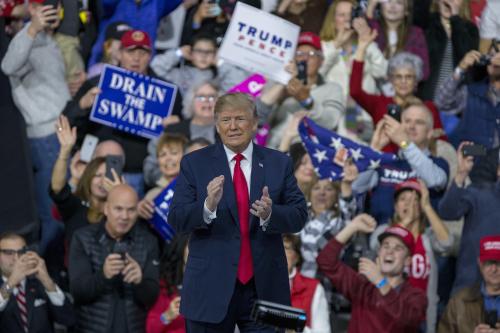Introduction
Local leadership experience, especially province-level administration, has long been seen as an important stepping-stone for China’s national leaders.1 Never before in the history of the People’s Republic of China (PRC), however, has the Politburo been populated by so many members whose political backgrounds have included service as provincial chiefs (i.e., Party secretaries and governors).2 All four of the Politburo Standing Committee members who were newly elected at the recent 17th Party Congress have had substantial leadership experience as provincial Party secretaries. Consequently, all of the nine members of the Politburo Standing Committee save one (Premier Wen Jiabao) had experience as provincial chiefs prior to their ascent to this supreme decision-making body. Furthermore, the six rising stars in the top leadership—the new Politburo members in their 50s—either recently served or currently serve as provincial Party secretaries. Five of them—Xi Jinping, Li Keqiang, Li Yuanchao, Wang Yang, and Wang Qishan— obtained their Politburo seats at the 17th Party Congress when they were provincial or municipal Party secretaries. Another rising star, Bo Xilai, then minister of commerce, also had leadership experience as governor of Liaoning for several years, and was appointed Party secretary of Chongqing after the 17th Party Congress.
Provincial leaders have also been well represented in the 17th Central Committee (CC) of the Chinese Communist Party (CCP). Of the 371 full and alternate members of the new Central Committee, 154 are local leaders, including 62 provincial chiefs, 62 deputy provincial leaders, and 30 municipal or prefecture level leaders. Collectively, these 154 members, whose primary function on the CC is to represent their localities, form the largest constituent group (41.5 percent) in the 17th Central Committee, compared with 84 (22.6 percent) from the central ministries, 65 (17.5 percent) from the military, 46 (12.4 percent) from the mass organizations, enterprises, educational institutions, and other functional groupings, and just 22 (5.9 percent) from the central Party organizations.
In contrast, leaders with ministerial backgrounds did not score nearly as well as their colleagues in the provincial leadership in the competition for higher offices during the 17th Party Congress. Among the ten newly elected Politburo members, only Bo Xilai was promoted directly from the ministerial leadership. Wang Gang and Liu Yandong came from the CCP central organizations, while Xu Caihou came from the military. The other six new Politburo members—the aforementioned five provincial and municipal Party secretaries plus 61-year-old Tianjin Party secretary Zhang Gaoli—were all promoted from the provincial leadership. Tellingly perhaps, Ma Kai, the minister of the powerful National Development and Reform Commission (NDRC), failed to obtain a membership in the Politburo, and Chen Deming, executive vice minister of the NDRC and Ma Kai’s anticipated successor, was not even elected to be a full member in the 17th Central Committee. With only an alternate membership, Chen will not have a chance to run this most important commission in the State Council. It has been widely believed that many delegates of the 17th Party Congress from the local administrations voted against Ma and Chen due to the NDRC’s unfavorable policy measures toward local governments.3
The large representation of local leaders in both the Politburo and the Central Committee reflects the growing power and influence of top politicians of the country’s 31 province-level administrations. An analysis of the career paths of the members of the new Politburo and Central Committee with local leadership experience can help illustrate how the central authorities try to contain economic localism and region-based factionalism through the promotion and reshuffling of provincial leaders. Such an analysis can also shed light on the CCP’s strategic priorities for the country’s regional development, especially in terms of how the competition for resources and policy initiatives between the coastal provinces and inland regions is likely to unfold. Finally, the distribution of power among the competing factions is as evident at the provincial level as at the national level, and deserves our attention. For instance, the information about how many of Hu Jintao’s protégés who advanced their careers through the Chinese Communist Youth League (CCYL) currently hold provincial chief posts is one of the most crucial factors for an assessment of Hu’s power.



Commentary
A Pivotal Stepping-Stone: Local Leaders’ Representation on the 17th Central Committee
January 28, 2008